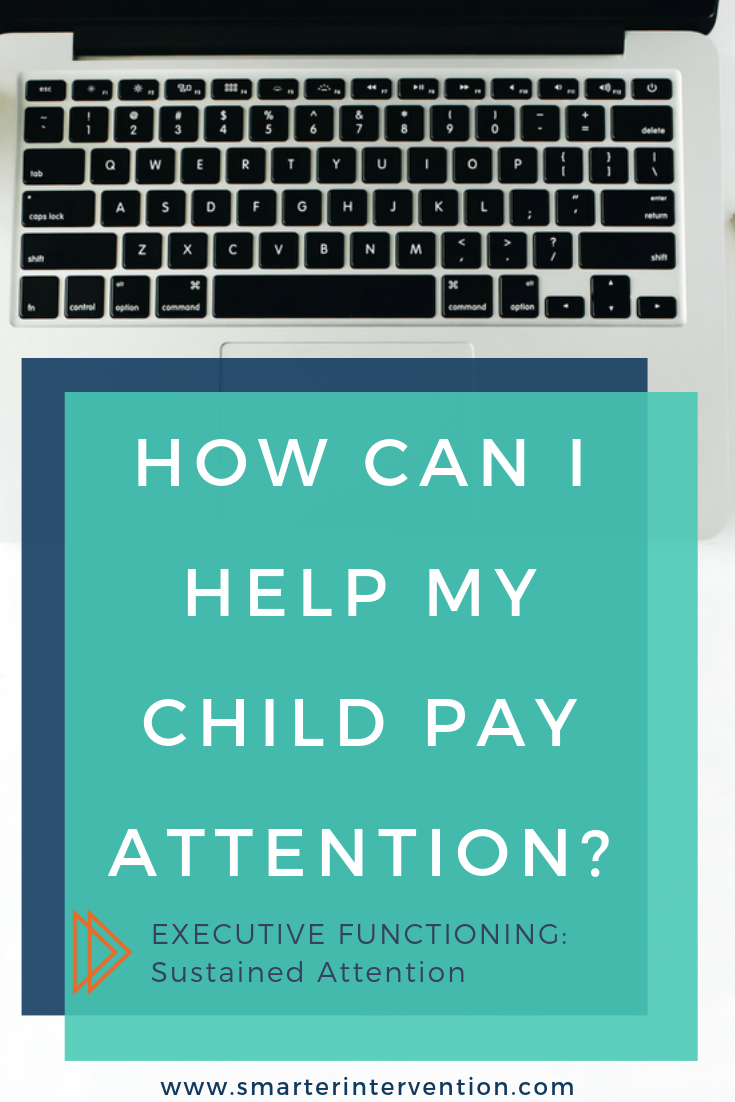How Can I Help My Child Pay Attention? EF: Sustained Attention
Have you ever experienced a time when your child is looking directly at you while you give them a direction, but they can’t seem to remember or follow anything that you said? Maybe even more frustrating, have you ever had a time when your child is doing everything but looking at you while you are talking to them, but when you tell them to pay attention, they can repeat back everything you just told them, verbatim?
Everyone pays attention differently. Some people need extra stimulation (a fidget, some background noise, the ability to move around, etc.) in order to best pay attention. For others, these same items/activities would be too distracting. This is going to vary from person to person, so it may be difficult at first to find the best tactic for your child when they need sustained attention.
Sustained attention is the ability to pay attention to something for a long period of time, even if it is a non-preferred task.
While paying attention to something that isn’t interesting to you is hard for anybody, it is especially difficult for our kids with ADHD and other attention struggles. This can affect everything from school, to work, to their social life. Here are a few tips/ tricks to practice with your child to help them build their sustained attention skills.
Tips/Tricks for Helping Your Child Pay Attention
Chewing gum
This can provide just enough stimulation for the child to pacify any hyperactiveness and allow them to pay better attention.
A fidget
This can be anything from a marble that they keep in their pocket and roll between their fingers, to a straw that they can chew on. Keep in mind - if this becomes a toy, it should be taken away because it is just adding to the distraction.
Set a timer -
Every time the timer goes off and the child is off task, this is a chance for him/her to redirect himself/herself. As the child gets better at this, the timer should be set to go off after a longer interval of time. You can grab our sustained attention anchor charts and timer activity by >> clicking here! <<
Know what his/her distractors are, and how to avoid them -
Sit down with your child and talk about possible distractions (common ones are a cell phone, noise, etc.) and how he/she can combat them. For example, if the child’s cell phone is a distraction, have him/her put it in another room while they do their homework. If noise in a classroom is distracting and the child has a 504, request that he/she take tests in a quiet room.
Shifting Attention
The ability to switch your attention from one person/task to another is called shifting attention.
This is a very common necessity, both in school and life, and can be extremely challenging for kids. Taking notes in class, talking in a group of people, and multitasking are all examples of times when shifting attention would be necessary. Think about taking notes, for example. This requires a child to
1) pay attention to what is on the board,
2) listen to what the teacher is saying,
3) pay attention to what they are writing down.
It can be extremely difficult for a child to shift between all of these things.
Helpful tip - if your child qualifies for an IEP or 504, you can request a copy of class notes be provided, so that the child doesn’t lose out on any critical information due to difficulty in shifting attention.
For tips and tricks you can use to help your child learn to monitor his/her own attention, check out “How to Teach Your Child to Self-Monitor Their Attention” here!

